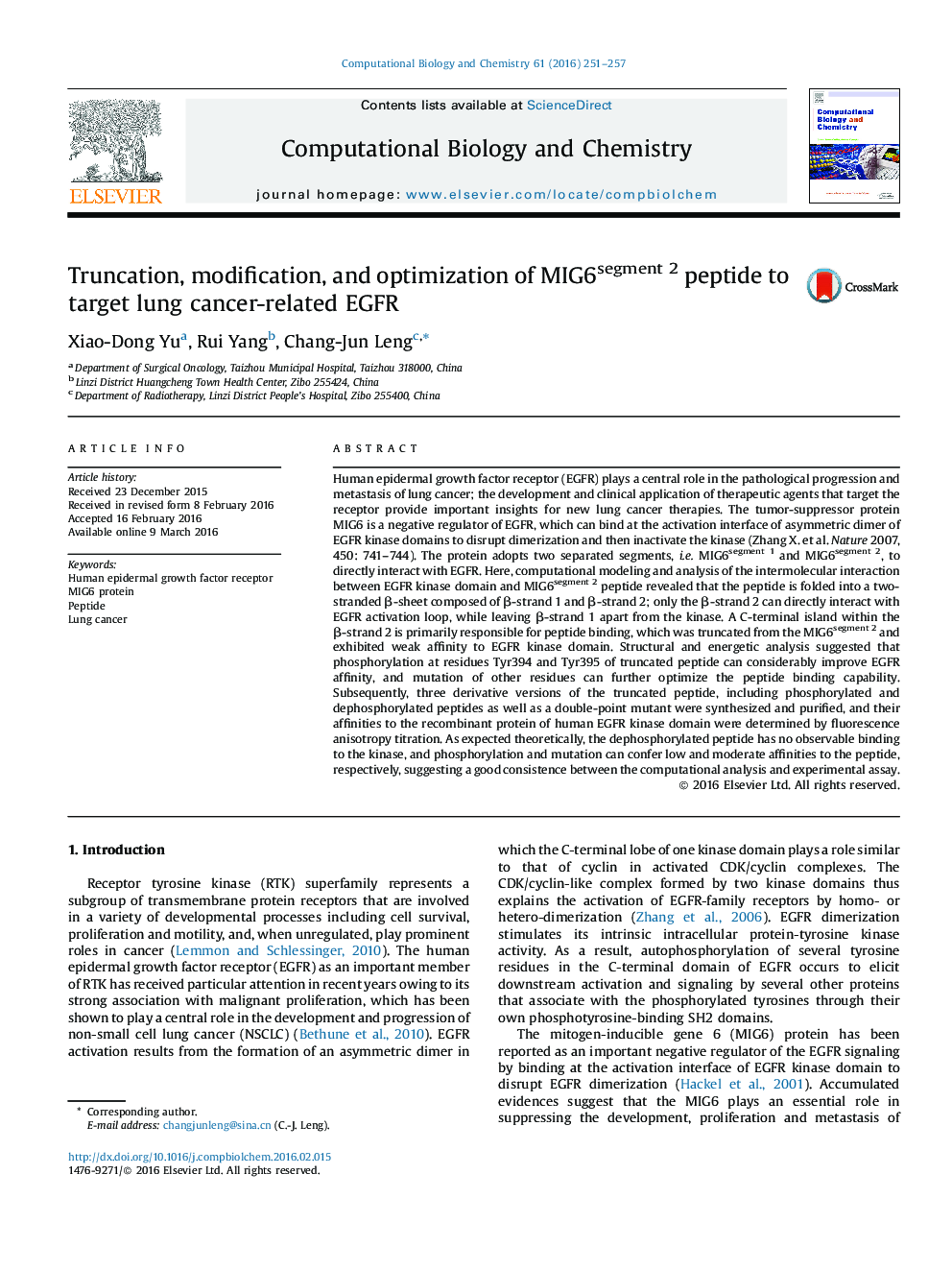| کد مقاله | کد نشریه | سال انتشار | مقاله انگلیسی | نسخه تمام متن |
|---|---|---|---|---|
| 14951 | 1362 | 2016 | 7 صفحه PDF | دانلود رایگان |

• An integrated in silico-in vitro strategy is described to improve MIG6segment 2 affinity to EGFR.
• A C-terminal island in MIG6segment 2 is primarily responsible for EGFR–MIG6segment 2 binding.
• The isolated island only binds weakly to EGFR, but its affinity can be recurred by phosphorylation and mutation.
• Several derivative versions of the island are deigned computationally and assayed experimentally.
Human epidermal growth factor receptor (EGFR) plays a central role in the pathological progression and metastasis of lung cancer; the development and clinical application of therapeutic agents that target the receptor provide important insights for new lung cancer therapies. The tumor-suppressor protein MIG6 is a negative regulator of EGFR, which can bind at the activation interface of asymmetric dimer of EGFR kinase domains to disrupt dimerization and then inactivate the kinase (Zhang X. et al. Nature 2007, 450: 741–744). The protein adopts two separated segments, i.e. MIG6segment 1 and MIG6segment 2, to directly interact with EGFR. Here, computational modeling and analysis of the intermolecular interaction between EGFR kinase domain and MIG6segment 2 peptide revealed that the peptide is folded into a two-stranded β-sheet composed of β-strand 1 and β-strand 2; only the β-strand 2 can directly interact with EGFR activation loop, while leaving β-strand 1 apart from the kinase. A C-terminal island within the β-strand 2 is primarily responsible for peptide binding, which was truncated from the MIG6segment 2 and exhibited weak affinity to EGFR kinase domain. Structural and energetic analysis suggested that phosphorylation at residues Tyr394 and Tyr395 of truncated peptide can considerably improve EGFR affinity, and mutation of other residues can further optimize the peptide binding capability. Subsequently, three derivative versions of the truncated peptide, including phosphorylated and dephosphorylated peptides as well as a double-point mutant were synthesized and purified, and their affinities to the recombinant protein of human EGFR kinase domain were determined by fluorescence anisotropy titration. As expected theoretically, the dephosphorylated peptide has no observable binding to the kinase, and phosphorylation and mutation can confer low and moderate affinities to the peptide, respectively, suggesting a good consistence between the computational analysis and experimental assay.
Figure optionsDownload as PowerPoint slide
Journal: Computational Biology and Chemistry - Volume 61, April 2016, Pages 251–257